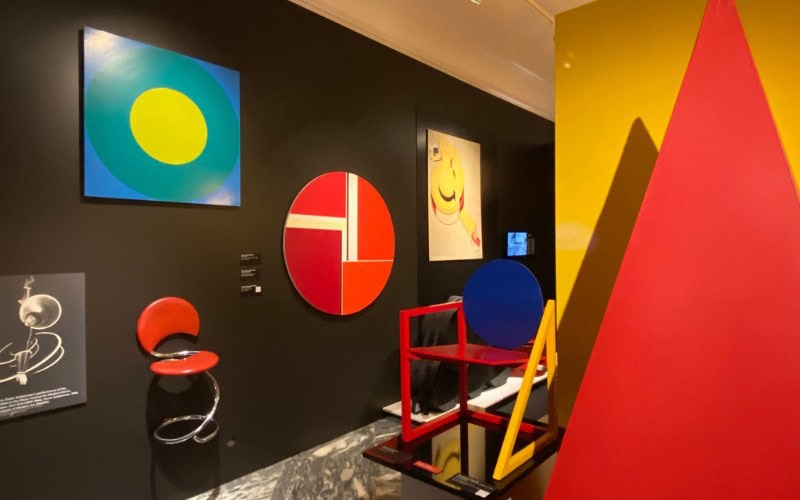Best Three Must-See Museums To Visit in Copenhagen
The best three museums in Copenhagen are all world-class and worth a trip to Denmark’s fabulous capital city just to visit them.
There are several must-sees, but for this post, I focus on my three favorites: the Design Museum, the Danish National Museum, and the Louisiana Museum of Modern Art, which is about thirty minutes north of Copenhagen (super easy to get to).
Armed with a Copenhagen Card, I ventured forth into the bustling streets of Copenhagen for three amazing Artsy Traveler experiences.
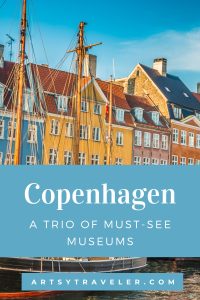
Highlights at a Glance
- Exploring the Magic of Form exhibition at the Design Museum
- Viewing the Viking exhibition at the Danish National Museum
- Wandering around the outdoor sculptures at the Louisiana Museum of Modern Art
- Staying in a stylish two-bedroom apartment in Nyhavn
- Taking a bike tour of Copenhagen
Location of Museums
The map below shows the location of the three museums described in this post: The Design Museum (#1), the Danish National Museum (#2) and the Louisiana Museum of Modern Art (#3).
Design Museum
Called the Designmuseum Danmark, this museum is absolutely stunning (see #1 on the map above).
Even if you’ve never in your life thought about design, put this museum on your list of must-sees while in Copenhagen. It tells the story of Danish design in room after room of artful displays of everything from furniture to objects to textiles to cutlery to posters, and a lot more.
I never wanted to leave, although after my visit, I did enjoy relaxing in the lovely courtyard and drinking lattes served by an enthusiastic young man. He was so pleased when we raved to him about how much we loved the museum.
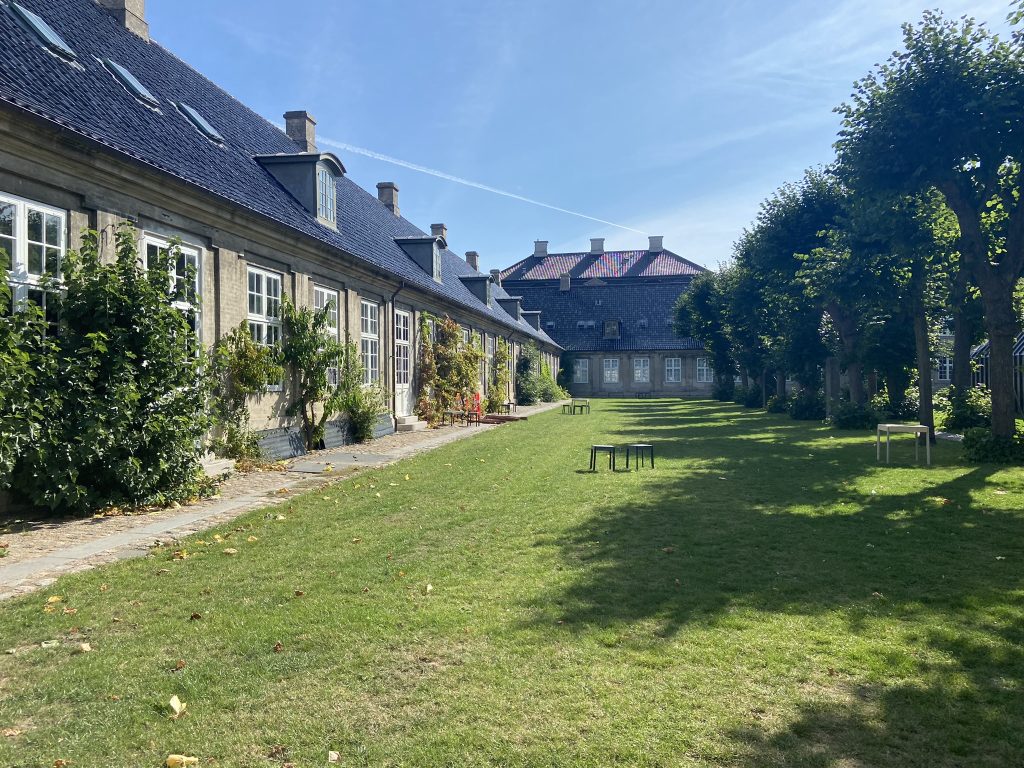
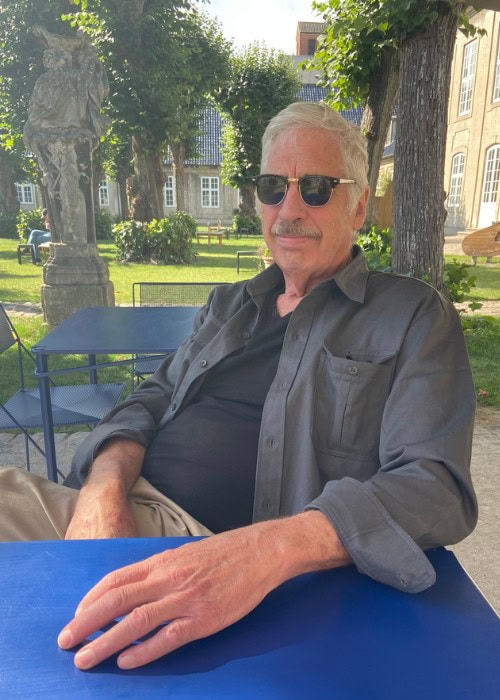
The many rooms in the Designmuseum Danmark are arranged around themed exhibitions that run for quite a long time. For the most up-to-date information about current exhibitions, check the museum’s website.
Each display is accompanied by informative explanations in both Danish and English. Here’s an overview of the exhibitions I saw at the Designmuseum Danmark.
The Future is Present
The first exhibition we entered explored many of the ways in which designers around the world are finding solutions to challenges such as climate change, refugee flows, pandemics, and more.
How do we live together in communities, relate to each other, and interact with our environments? And what role does design play?
The many displays are both beautiful and thought-provoking. One of my favorites is this display of biodegradable urns. The pendant attached to the urn is planted so that loved ones can enjoy “the growing flowers and a tree in a place for conversation and remembrance.”
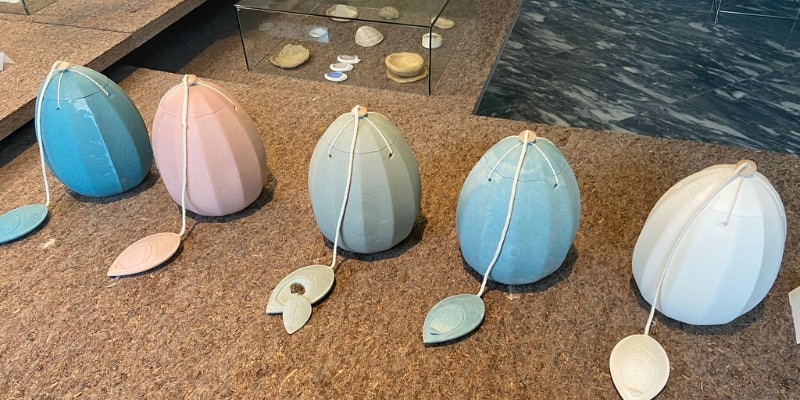
Wonder
This exhibition featured objects from some of the Designmuseum’s many collections. The exhibition tells the story of how a thing becomes an object in a private collection or in a museum. Each display is imaginatively presented and accompanied by excellent commentary.
You could spend a lot of time in the Designmuseum Danmark!
Here’s a sampling of some of the objects in the Wonder exhibition.
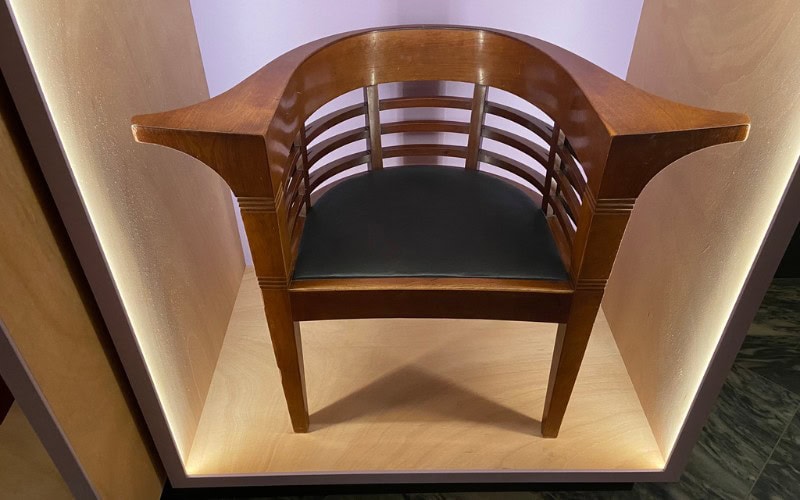
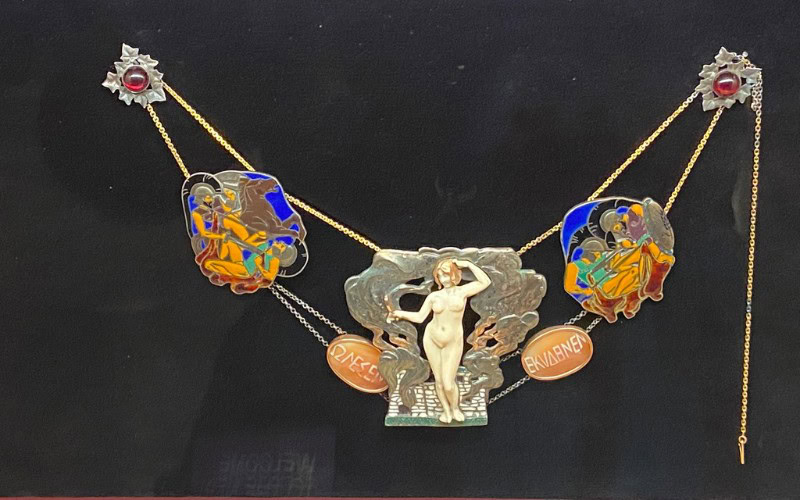
The Magic of Form
Our favorite exhibition was The Magic of Form that took us on a fabulous journey through Danish design history. As anyone who has seen a piece of Danish modern furniture knows, Denmark and design go hand in hand.
The Danes have a knack for creating marvelously designed furniture that is both beautiful and practical.
The exhibition is massive–room after room of objects and pieces of furniture that follow the historical development of Danish design from around 1900 to the present. Every time I entered a new room, I gasped in wonder.
Not only were the objects themselves stunning, but also the way in which they were presented raised my experience of museum display techniques to new heights.
Here’s a selection of a few of the rooms and displays I wandered through.
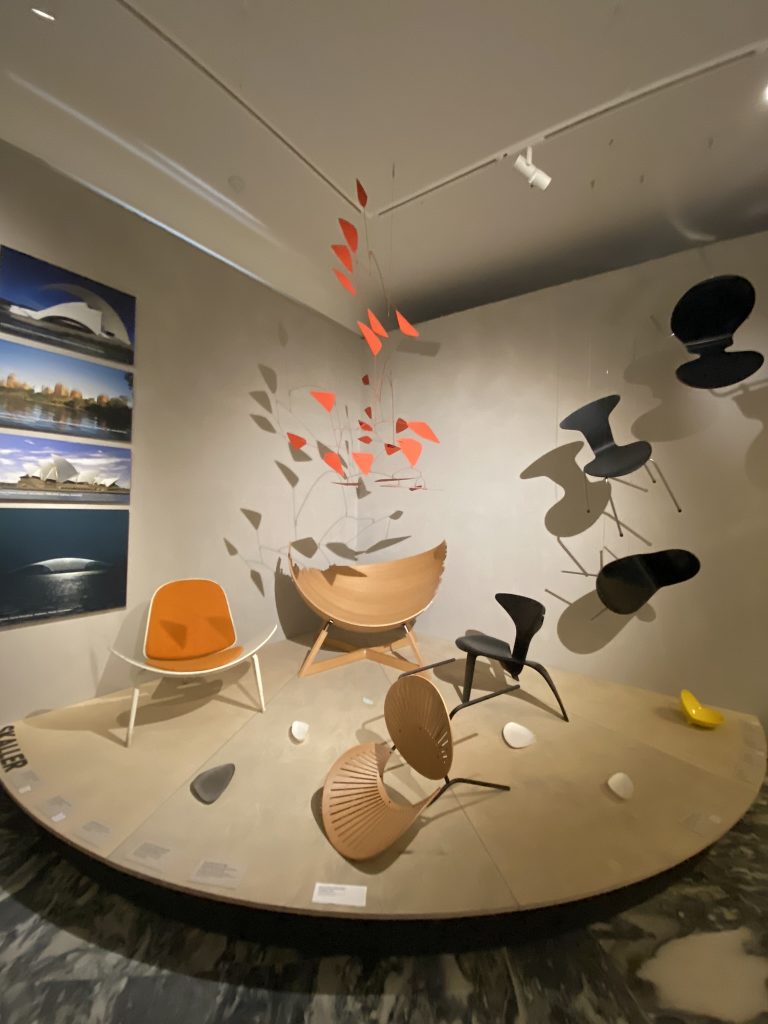
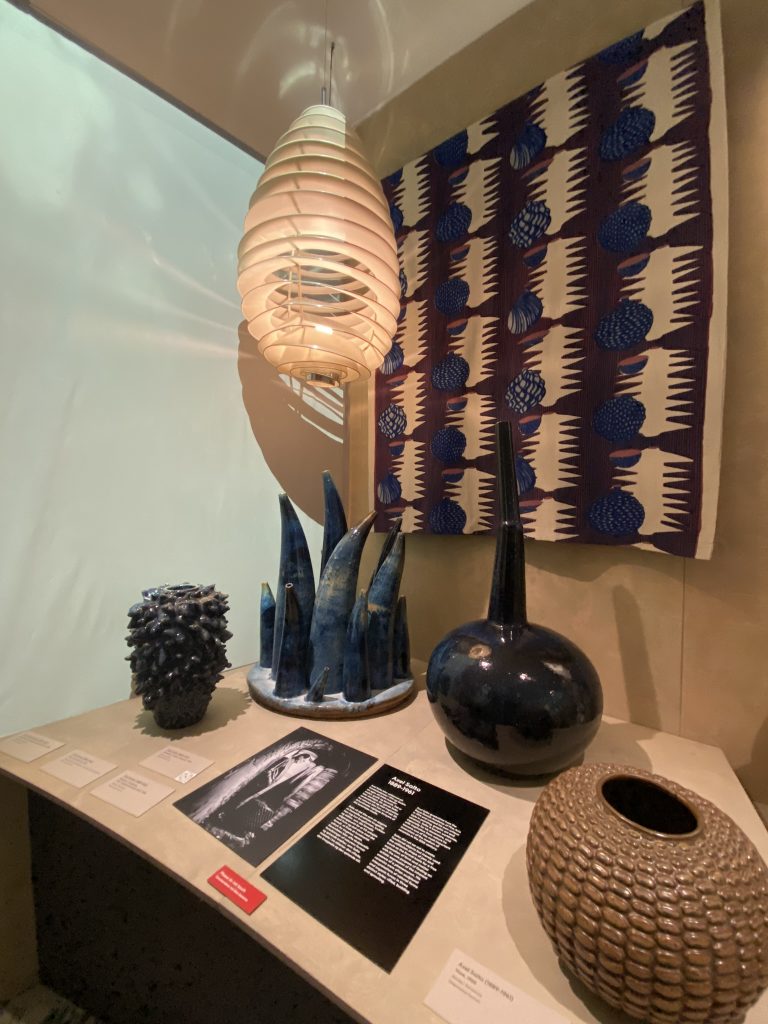
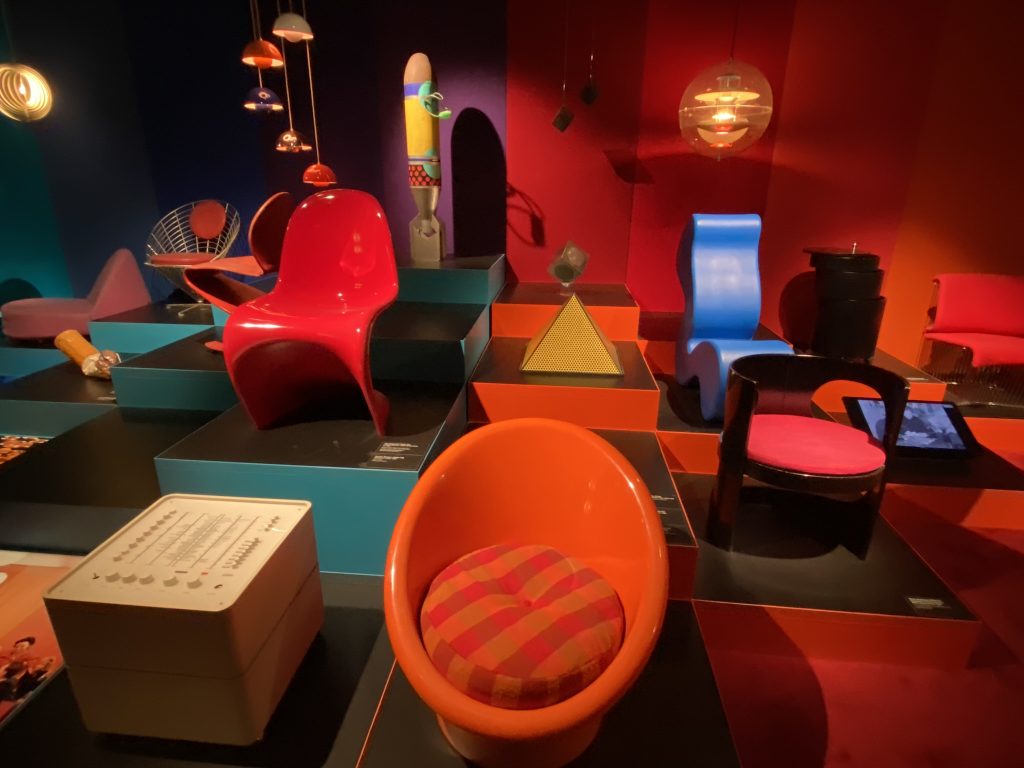
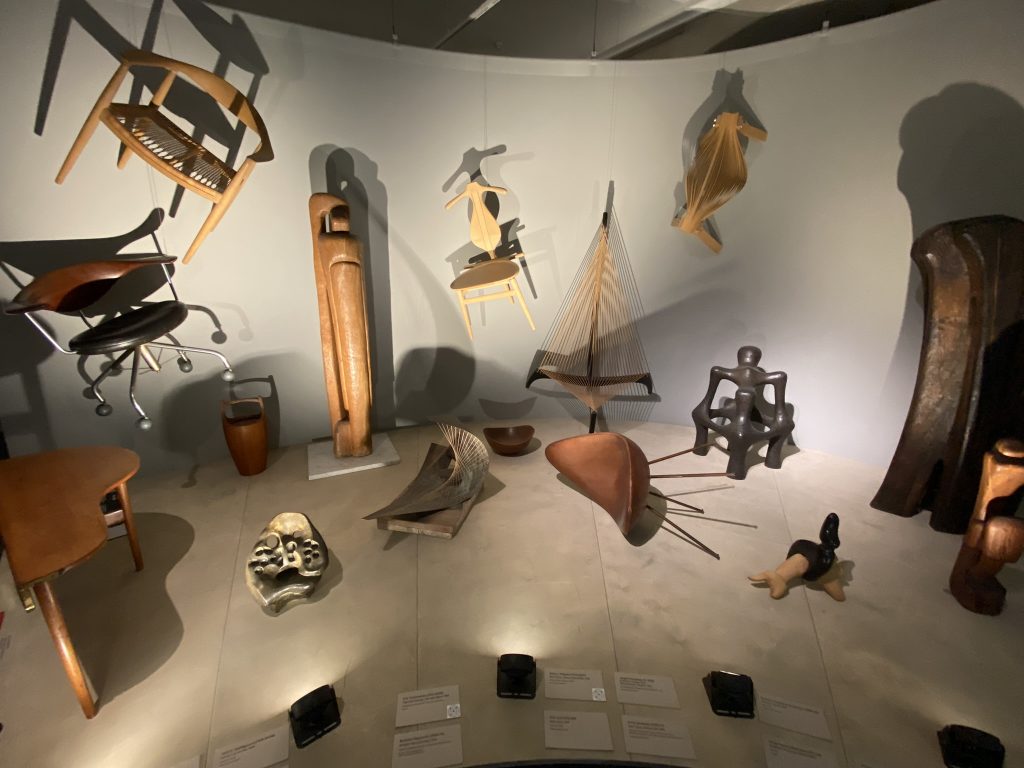
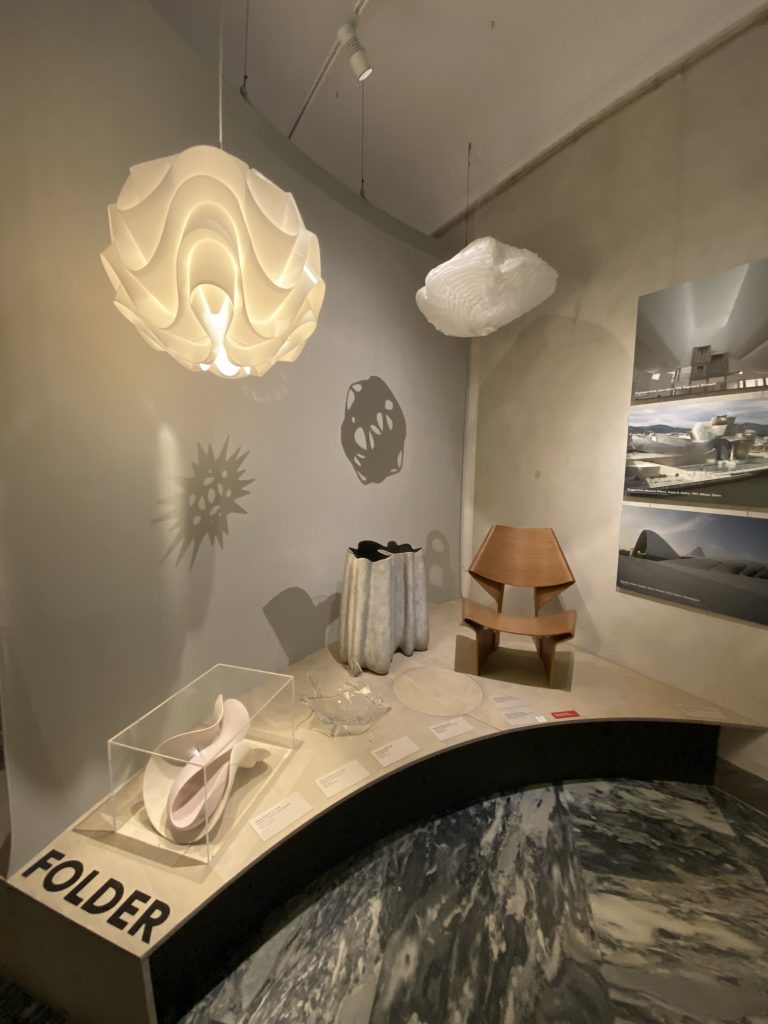
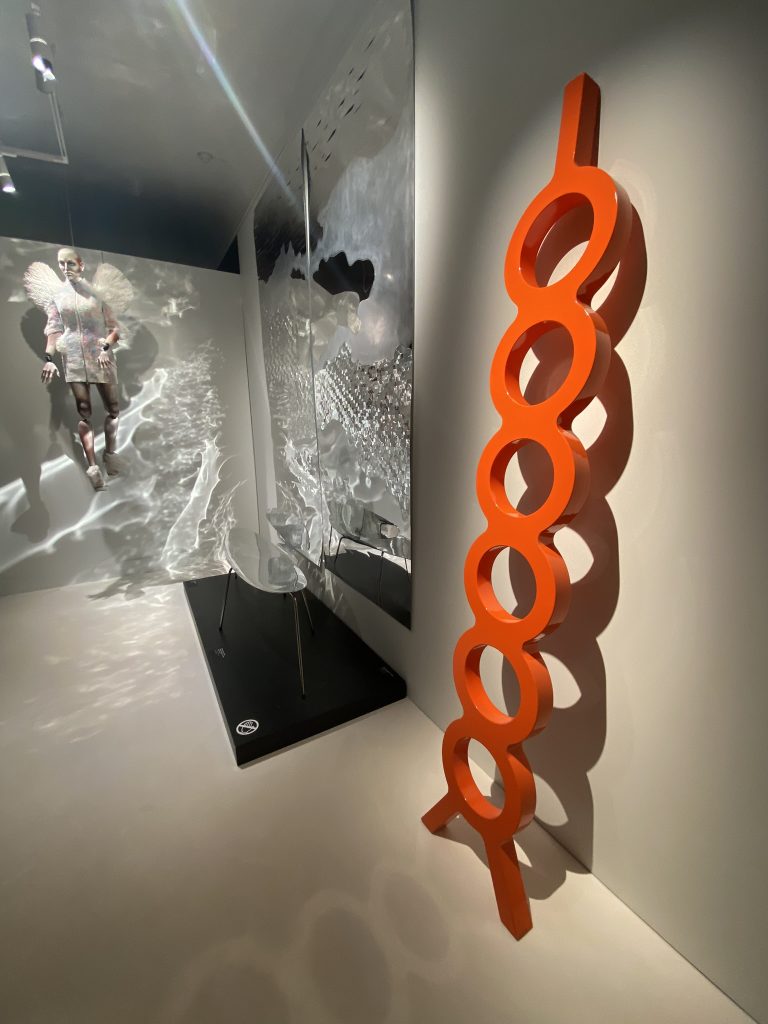
Other Exhibitions
When I toured the Designmuseum Danmark, I also saw two other exhibitions. The Table, Cover Thyself exhibition of plates and cultlery showed a myriad selection of table settings including plates, cutlery, tureens, figurines, and more. I particularly loved these two jugs.
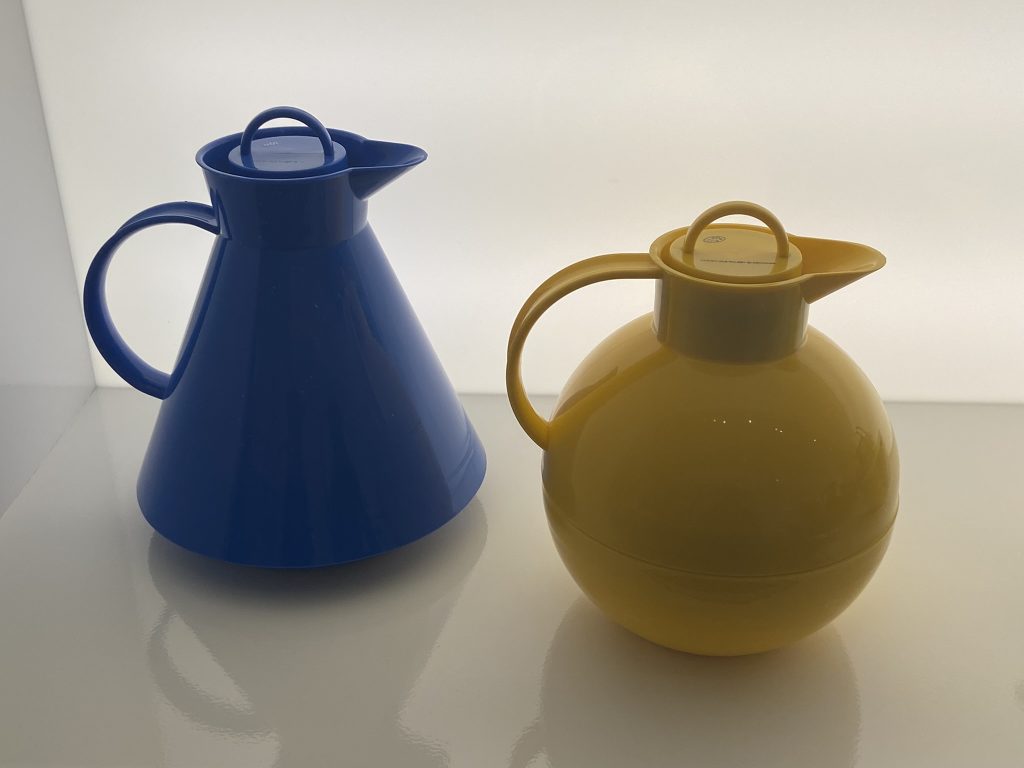
The Powerful Patterns exhibition explored patterns as an artform and included a wealth of textiles and costumes, including this beautiful dress.
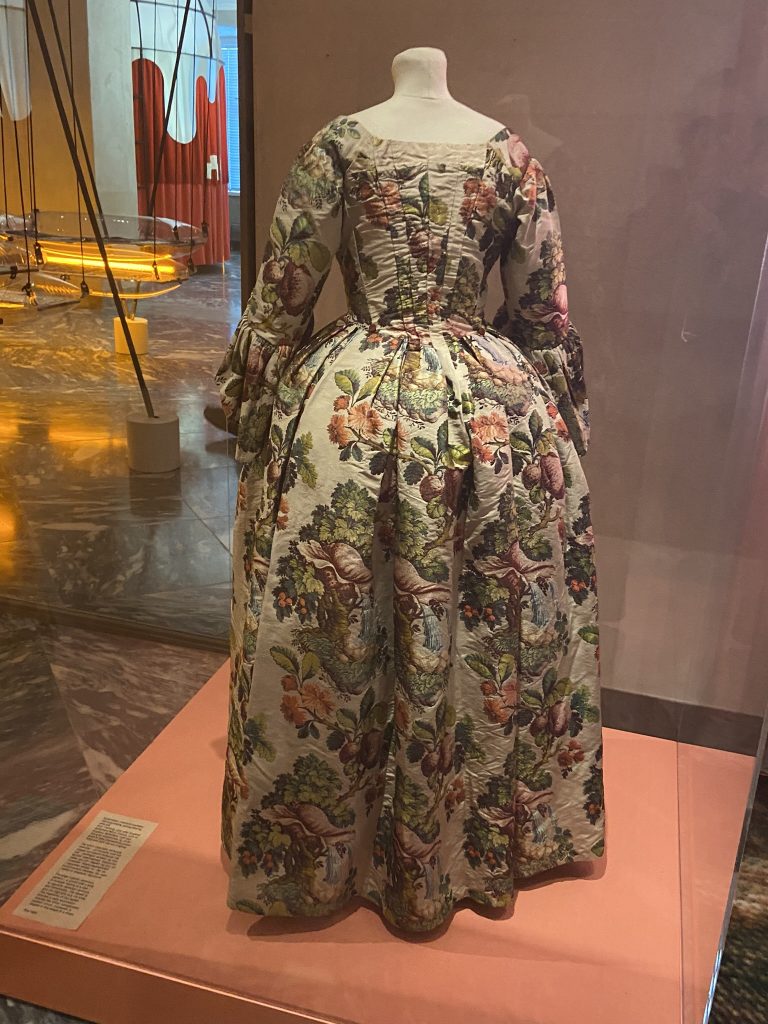
The Designmuseum Danmark was one of the many highlights of my week in Copenhagen. I can hardly wait to return to see what new exhibitions are being featured.
And to top off my visit, I discovered that even a trip to the ladies room was fraught with design. Here’s what I saw when I look up from where I was, um, sitting:
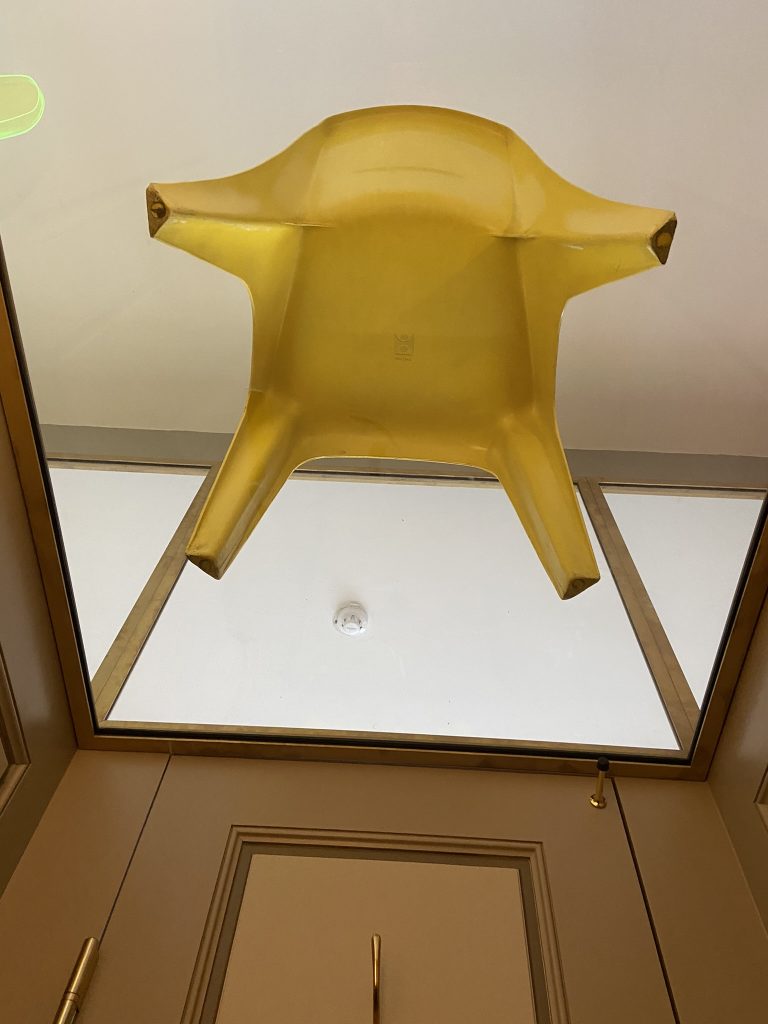
The Danes have a sense of humor for sure!
Design Museum Practical Information
The Designmuseum Danmark is open from 10 am to 6 pm Tuesday to Sunday (closed Monday). Admission is 130 DKK for adults, but you can use your Copenhagen Card (see below for details). The museum is located at Bredgade 68 and makes a great stop on the way to see the Little Mermaid in the Copenhagen harbor.
The National Museum of Denmark
The Nationalmuseet (#2 on the map at the top of this post) is another major museum in which you could get lost for hours. In fact, I ran out of steam after touring the awesome collection of prehistory and Viking artifacts and didn’t see all the museum has to offer.
All the more reason to return!
But even if you, like me, only manage to tour half the museum, make sure it’s the half that includes the Danish prehistory and Viking collections. Each display is cleverly mounted and includes interesting commentary in Danish and English.
Danish Prehistory Collection
I have a soft spot for prehistory museums and monuments, and visit them whenever I can. Check out my post on seven of my fave prehistory spots in Europe. Given my predelictions, I naturally made a beeline for the Danish Prehistory collection.
What a treasure trove!
The exhibition features objects made prior to 1050 AD and extending way, way back into the misty mists of time (like 6000 BCE!) and includes unique archaeological treasures like the Trundholm Chariot of the Sun, the Egtved girl’s grave, the Gundestrup cauldron, the Hoby tomb, and more.
Twenty-four rooms arranged in a large square enclosing the gardens take you from the earliest years up to the Viking era.
I was surprised and enthralled by the age of many of the prehistoric objects in the first several rooms. A highlight is the skeleton of a massive bull elk that perished in a bog over 8500 years ago.
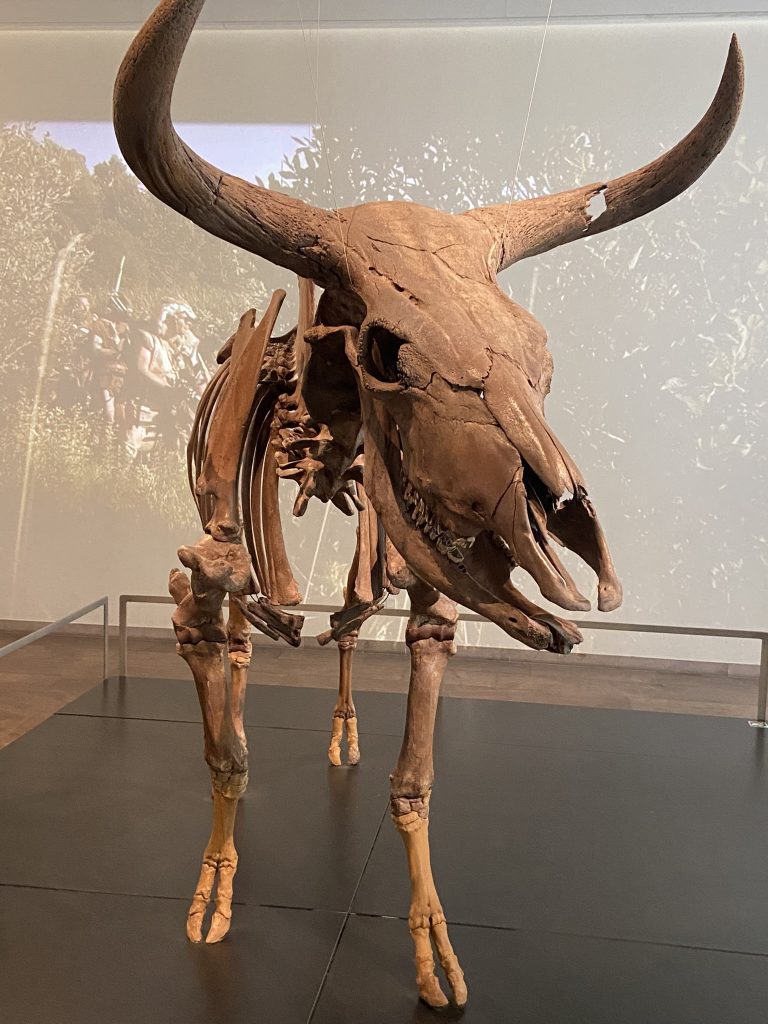
Here are two of my favorite displays, but there were many more. You could spend a very long time in the Danish prehistory rooms.
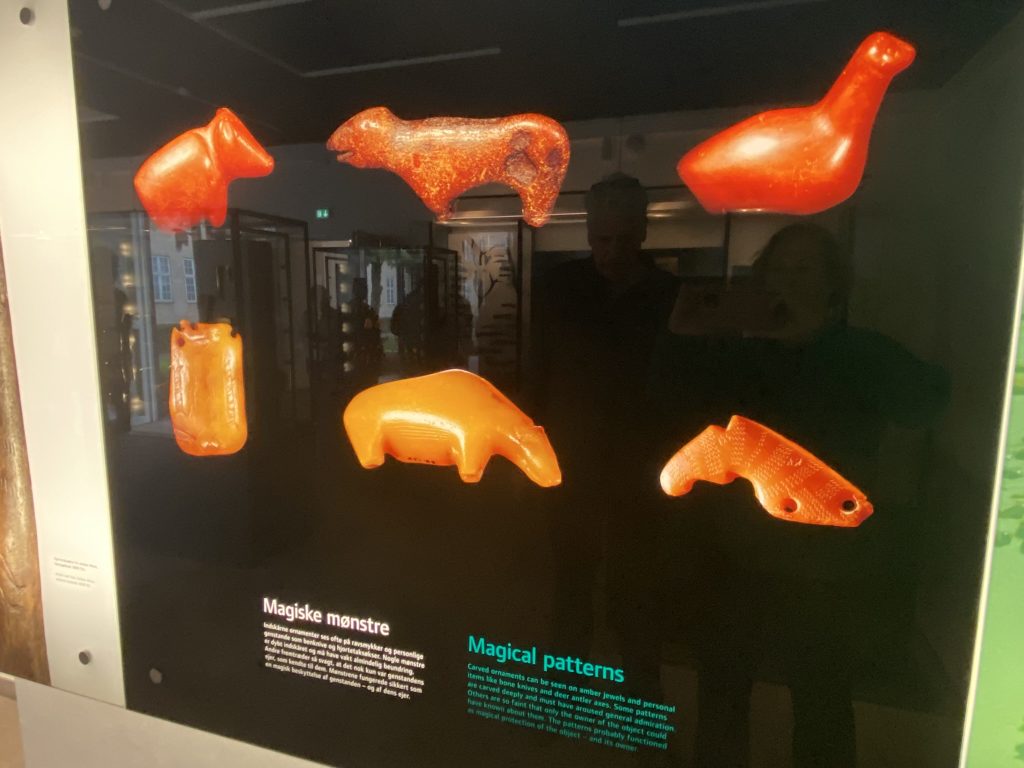
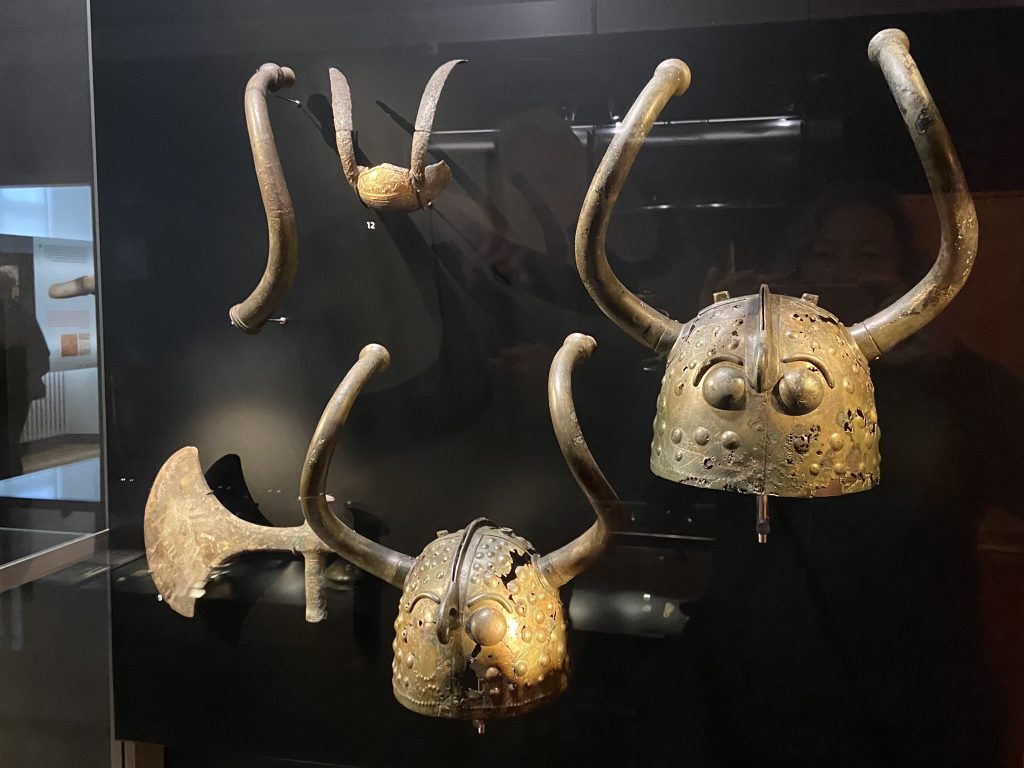
Viking Exhibition
Eventually, you’ll arrive at the Viking exhibition to be confronted by a model of a full-size Viking ship (and it’s really big!). The ship dominates the large room that includes displays that trace Denmark’s huge contribution to world history.
At one time, Vikings controlled vast swathes of Europe, extending all the way to North America. A wall-size map at the beginning of the exhibition shows how far their influence extended.
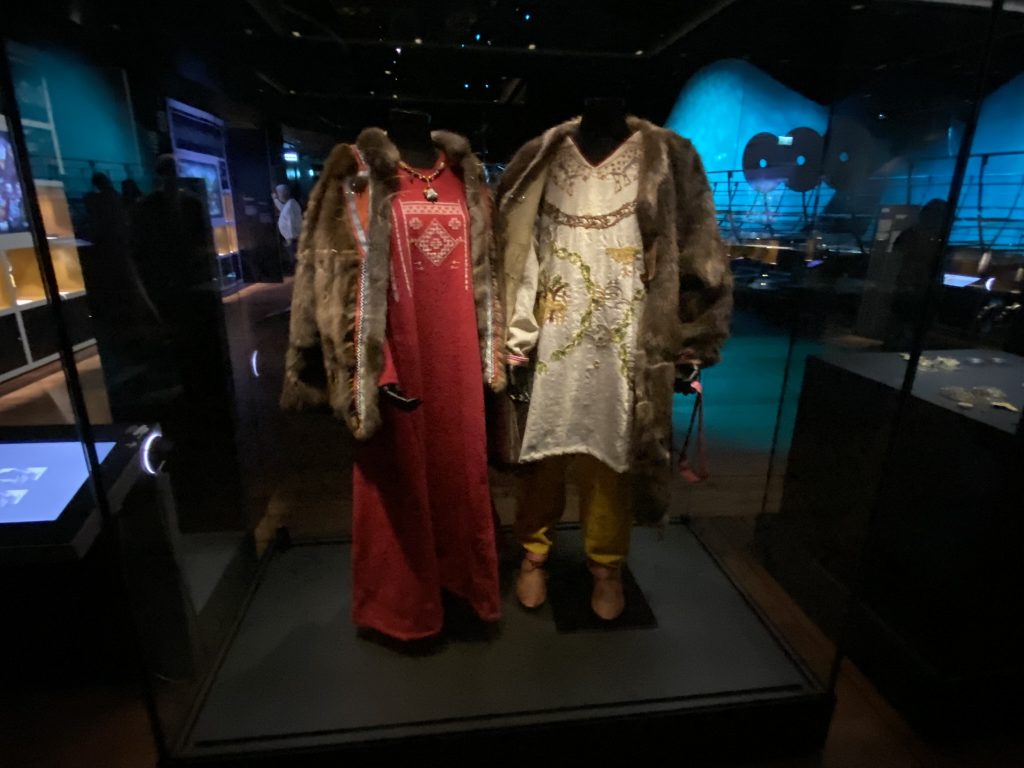
The Danes are very proud of their Viking heritage, as evidenced by the care they’ve taken to mount such a spectacular exhibition.
The Raid Experience
Included in the Viking exhibition is a new multi-media experience called “The Raid” that invites guests to “hop aboard and join the Vikings on an adventurous raid.”
“The Raid” isn’t actually a ride. You walk through a series of rooms, stopping in each to watch a 360-degree projection accompanied by commentary in English. The projections tell the exciting story of Björn Ironside, the legendary Viking who led 62 ships on an ill-fated journey to Rome.
Along the way, they plunder and pillage as Vikings are wont to do, but never actually make it to Rome. They do make it into the Mediterranean, however. Unfortunately, on their way out again, they are almost destroyed by large firebombs raining down upon them from the cliffs above the Strait of Gibraltar.
Poor Bjorn perishes and very few ships make it back to Denmark. So ends Bjorn’s raid, only to be revived 1500-odd years later for tourists to wonder at.
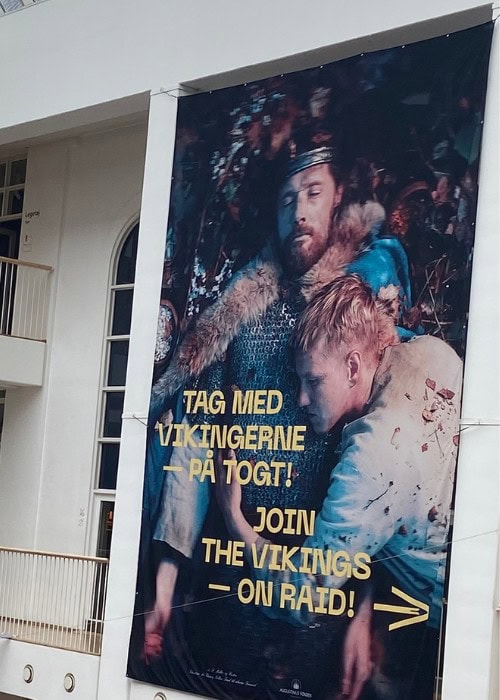
What Else to See at the National Museum
The museum includes exhibitions from Denmark’s Middle Ages and Renaissance, the histories of Denmark, an antique collection, the Children’s Museum, Voices from the Colonies, and a Coin and Medal Collection in addition to special exhibitions.
Everything is state-of-the-art, a real testament to recent advances in museumology.
I need to go back!
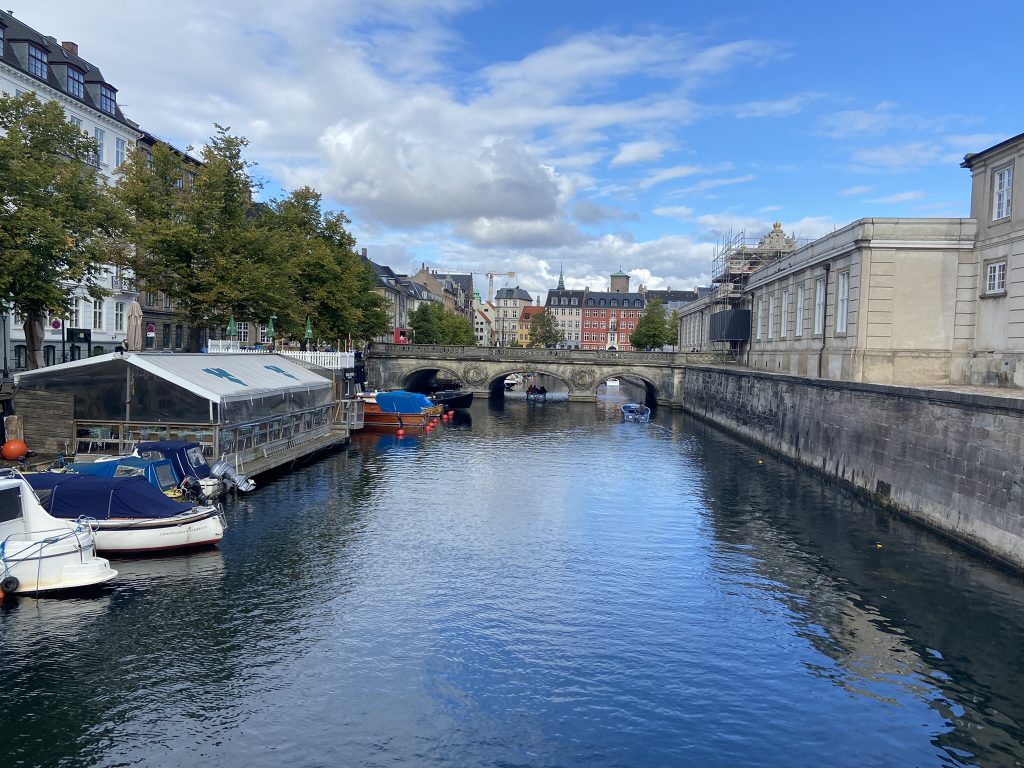
National Museum of Denmark Practical Information
The National Museum of Denmark is located in the Prince’s Palace at Ny Vestergade 10. It’s within walking distance from Nyhavn where I recommend you stay. The museum is open Tuesday to Sunday from 10:00 to 18:00 (closed Monday) and covered by the Copenhagen Card.
Louisiana Museum of Modern Art
The Louisiana Museum of Modern Art (#3 on the map at the top of this post) is about a 30-minute train ride north of Copenhagen. It’s world-renowned as one of Europe’s best modern art museums, and therefore a must-visit for the Artsy Traveler!
The setting of the museum on the North Sea and the many outdoor sculptures are fabulous and well worth the trip.
The food in the restaurant overlooking the water is also excellent!
Founded by Knud W. Jensen to house Danish modern art, the museum opened in 1958. Within a few years, the focus shifted from featuring predominantly Danish art to becoming an international museum that showcased internationally renowned artists.
Check what exhibitions are on, but even if they don’t appeal, visit the museum anyway. It makes for a lovely morning out from Copenhagen. You reach it by train (covered by the Copenhagen Card) followed by a pleasant 20-minute stroll along a suburban road to the museum.
After visiting the exhibitions, head outside where the real stars of the museum are located. Here’s a selection of sculptures dotted all around the large property.
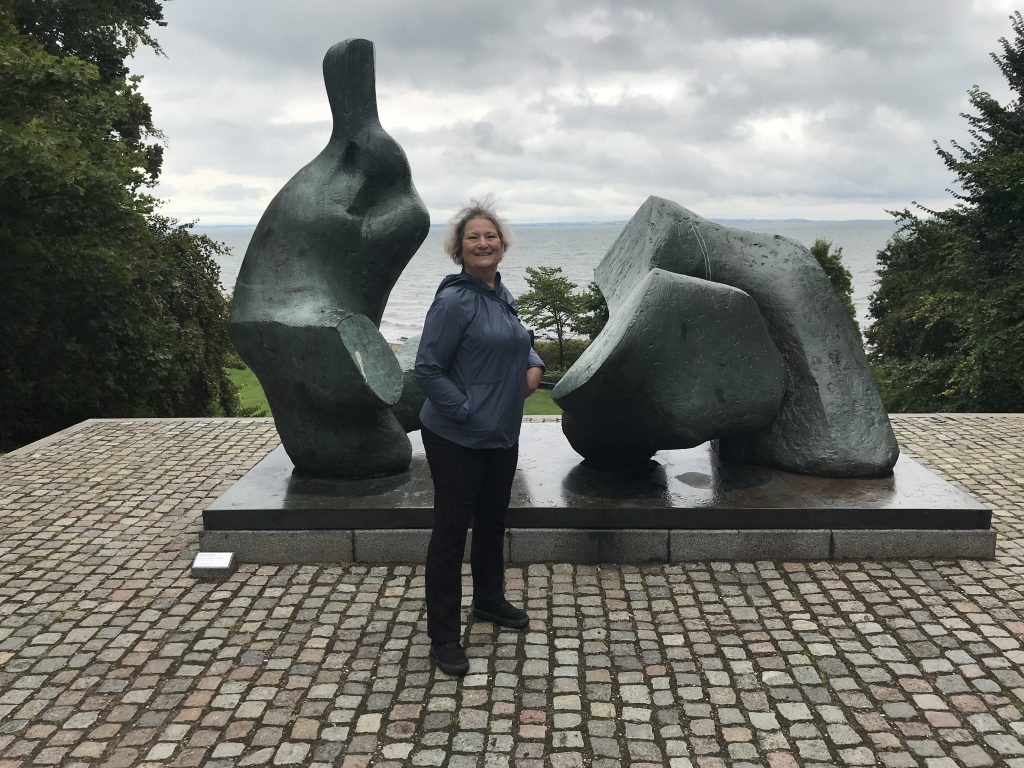
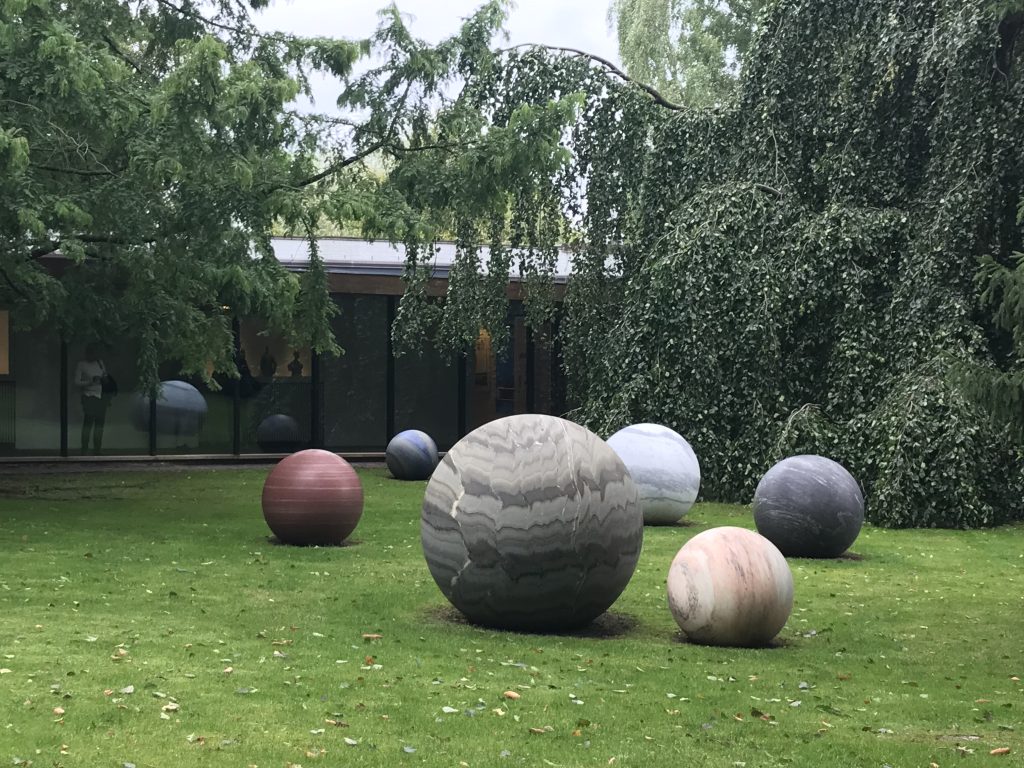
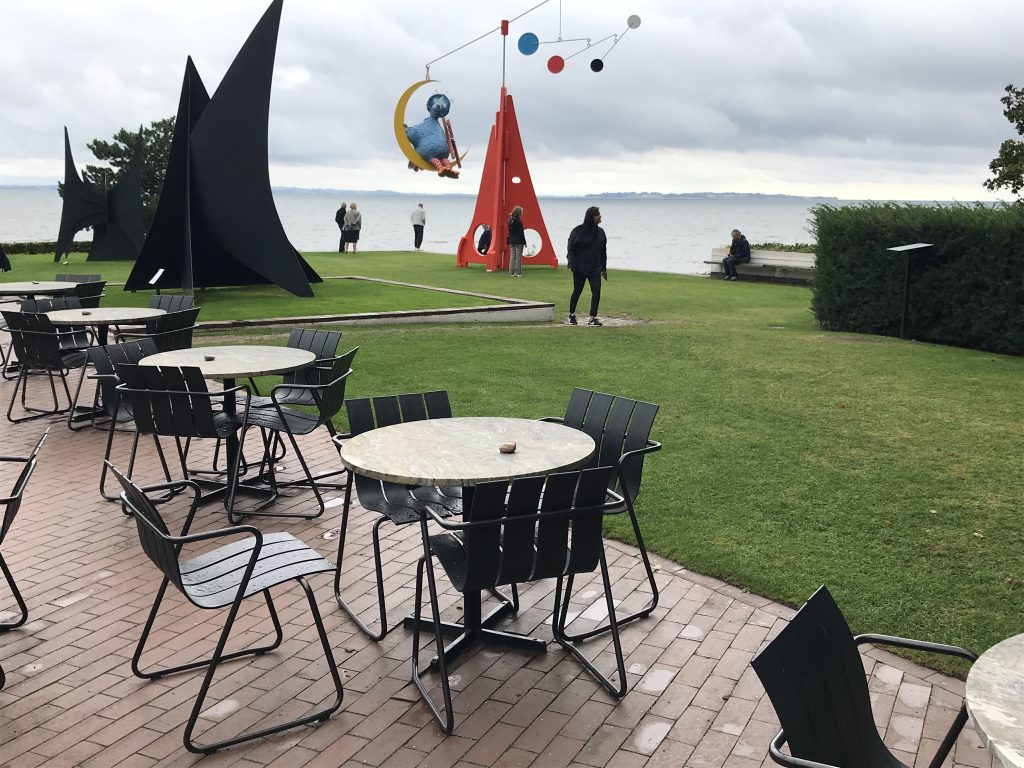
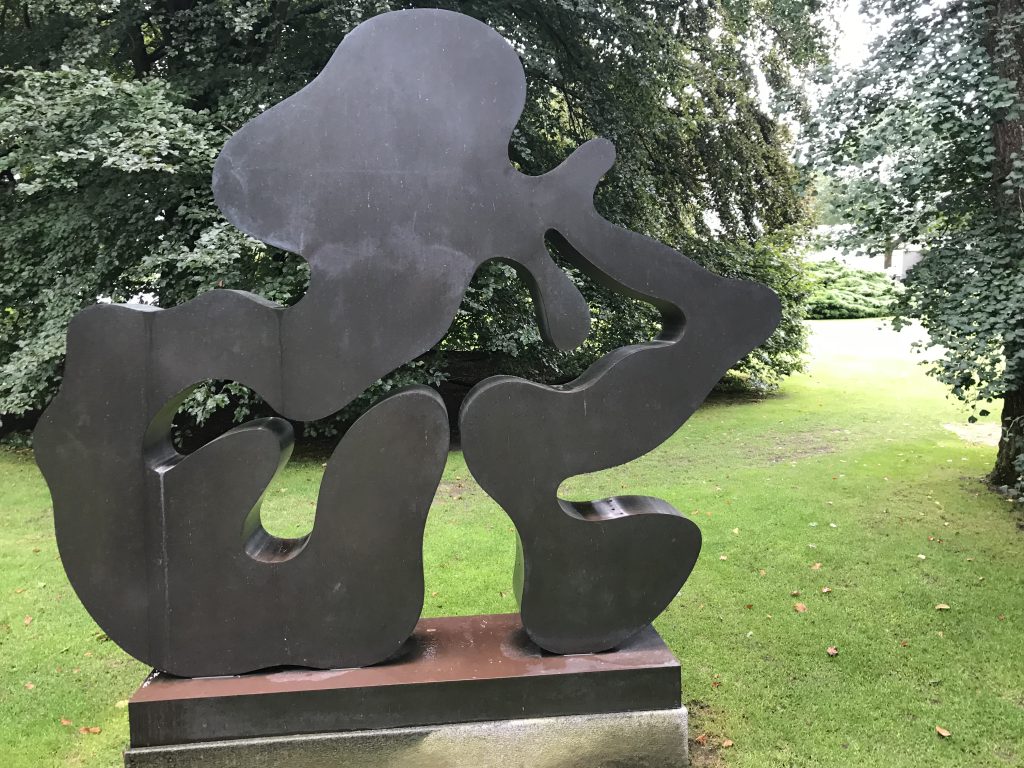
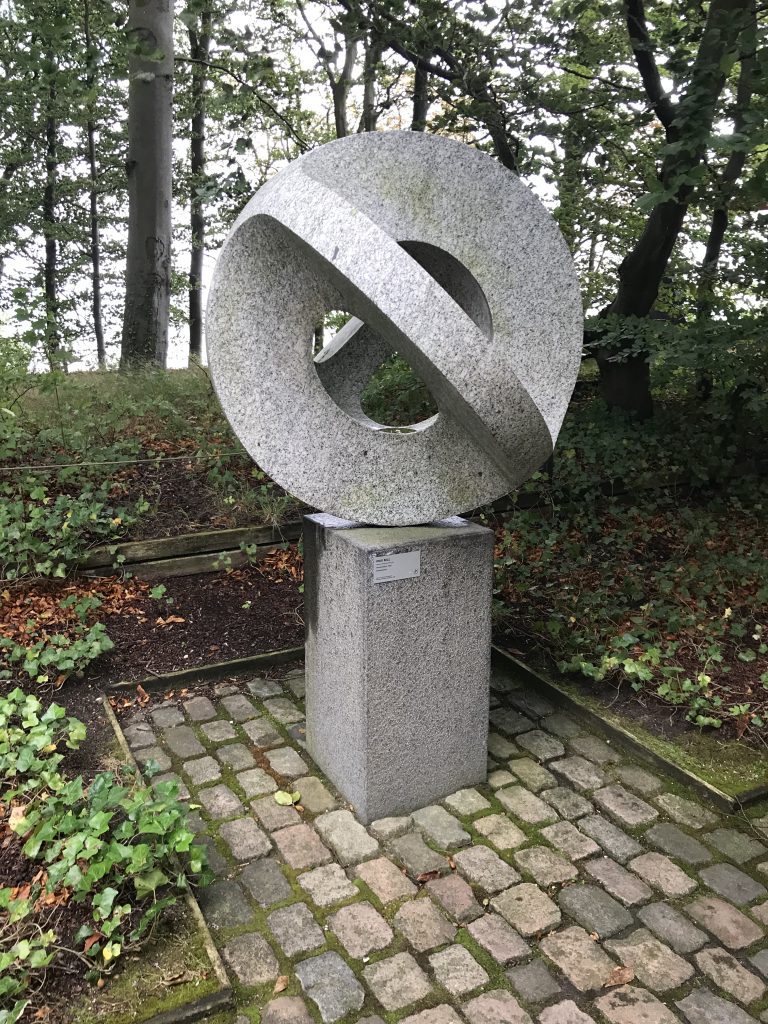
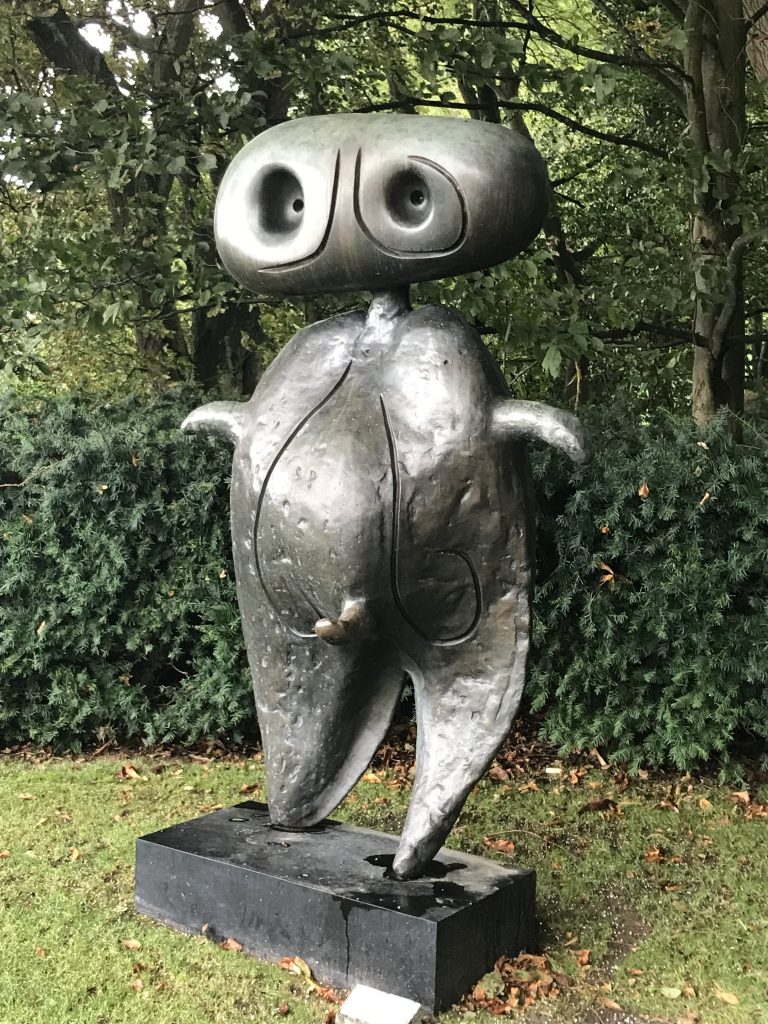
Louisiana Museum of Modern Art Practical Information
The Louisiana Museum of Modern Art is located in Humlebæk about 30 minutes north of Copenhagen. Catch the train from the main train station and then walk about twenty minutes to the museum. If you have a car, you can drive there. Ample parking is provided. The museum is open Tuesday to Friday from 10:00 to 22:00 and Saturday and Sunday from 11:00 to 18:00 (closed Monday) and covered by the Copenhagen Card.
Purchase the Copenhagen Card
Not all tourist cards are great value, but the Copenhagen Card is definitely worth purchasing. It covers so much of what you’ll want to see in Copenhagen, including all three of the museums covered in this post along with dozens more museums (there are a LOT of museums in Copenhagen), attractions such as Tivoli Gardens (worth a visit to see the lights in the evening), and all your transportation in and around Copenhagen.
You can use it on the local subways and on trains that go farther afield to popular destinations such as Frederiksburg Castle, Kronburg Castle, and the Louisiana Museum of Modern Art. It truly is a bargain and a major time-saver.
I almost never buy city cards, but I’m very glad I purchased the Copenhagen Card. Having it saved me loads of time, made sightseeing a pleasure, and took all the stress out of riding public transit. It’s a winner!
Click the image below to purchase the Copenhagen card.
Copenhagen Tours & Tickets
Check out more tours and things to do in marvelous Copenhagen with Get Your Guide.
You can also purchase tickets directly through Tiqets.com
Copenhagen Walking Tours
GuruWalk lists pay-what-you-please walking tours that connect tourists with tour guides all around the world. Check out their tours of Copenhagen!
Where to Stay in Copenhagen
If you’re looking for lots of space in the atmospheric Nyhavn area, you can’t go wrong with this two-bedroom apartment located in one of the colorful houses right on the harbor.
Another good option is the stylishly upscale Phoenix Copenhagen, also in the Nyhavn area. The hotel is pretty high end price-wise, but the staff are friendly, the marble lobby is gorgeous and the restaurant downstairs serves hearty food, particularly welcome on the cold and rainy night I stayed.
Conclusion
Have you visited museums in Copenhagen? Which ones did you visit and recommend? Please share in the comments below.
Here are more posts about awesome museums to visit in England and Europe:
